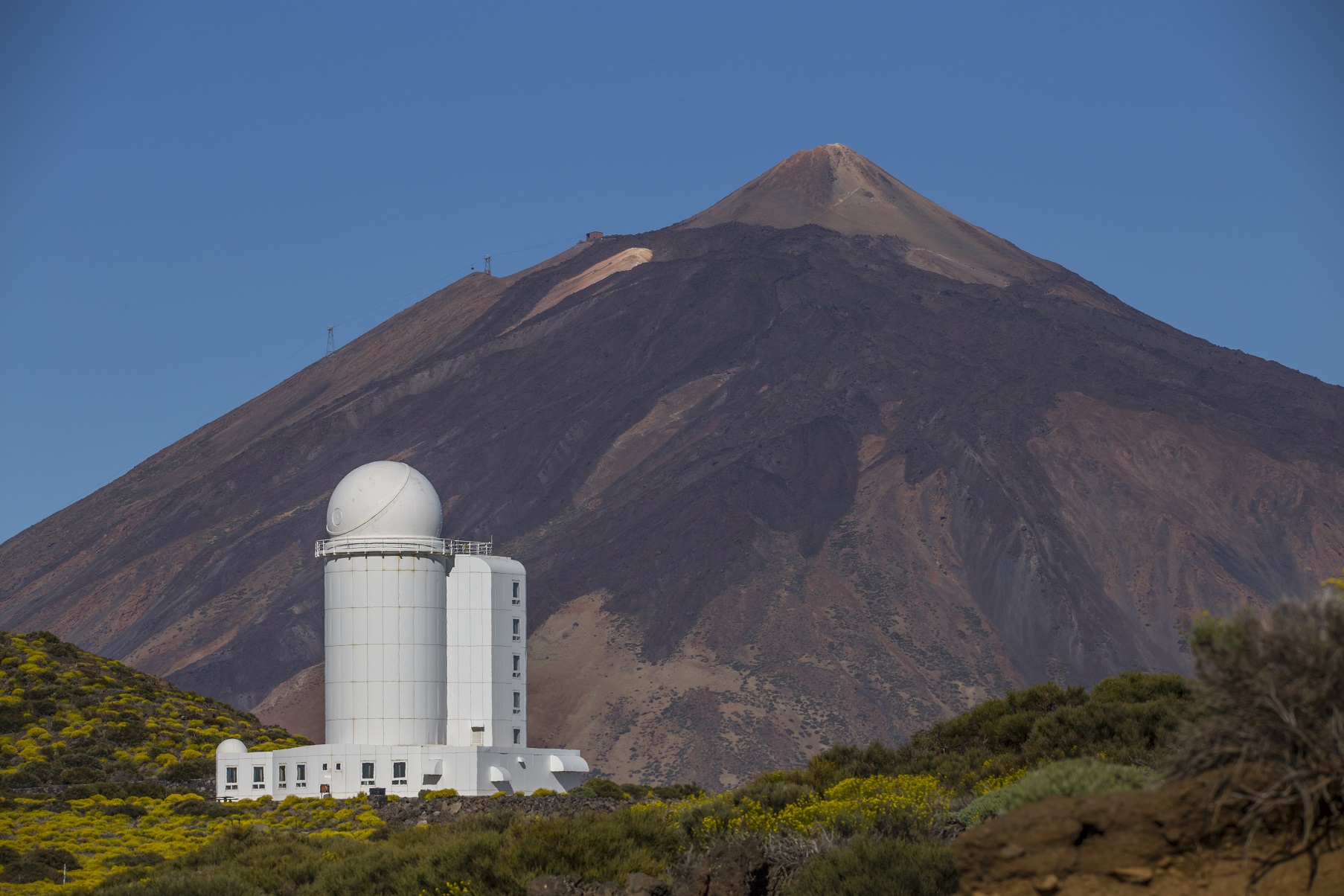THEMIS Solar Telescope
|
The “Télescope Héliographique pour l’Étude du Magnétisme et des Instabilités Solaires” (THEMIS) of CNRS-INSU is a 1-meter-class optical solar telescope, primarily dedicated to studying solar magnetism and the dynamical processes within the Sun’s atmosphere (such as sunspots and solar flares). THEMIS can also perform observation of near-Sun objects such as Mercury and comets. THEMIS is located at the Teide Observatory of IAC, with a base office in La Laguna, in Tenerife, Canary Islands, Spain.
New : October : Seminar on THEMIS at the Plasma Physics Laboratory, Paris (FR). Click for information on: How to reach THEMIS locations ; How to contact the THEMIS team |
Overview of telescope status
|
|
The THEMIS telescope and its science
Technical & scientific information about THEMIS
THEMIS scientific objectives
THEMIS administrative structures
Observing with THEMIS
Information for research scientists wishing to observe with THEMIS
Schedule of 2025 observing campaign
Weather at THEMIS location and weather forecast
THEMIS data products & data access
THEMIS Scientific research & results
Scientific research with THEMIS
THEMIS scientific highlights and news
THEMIS observations and media galleries
THEMIS image of the month: September 2025
|
THEMIS design, laid out in the 1980's, predate the revolution of adaptive optics (AO), and hence didn't foresee its installation. AO has since proved to be an indispensable technology of all modern high-resolution telescope. The core of the THEMIS overhaul that took place in the second half of the 2010's had the installation of a simple AO at the core of its objective. The installation of the THEMIS AO was thus particularly challenging as it required to deal with the limited existing available space. The entry prism is thus located just inside the spectrograph container, close to its roof, in a location that is not easily accessible. In addition, as shown in the diagram of TAO, it imposed to place the wavefront sensor optical bench (as well as the scanning mirror) outside of the THEMIS spectrograph container, in a vertical layout. |
THEMIS telescope management
Internal pages for the THEMIS team
Previous THEMIS front page
© 2025 CNRS-THEMIS
Terms of use: unless otherwise specified, all graphical (webcam records, movies, pictures) or non-graphical material (text) from this site is property of CNRS-THEMIS under a Creative Commons CC-BY 4.0 license.






